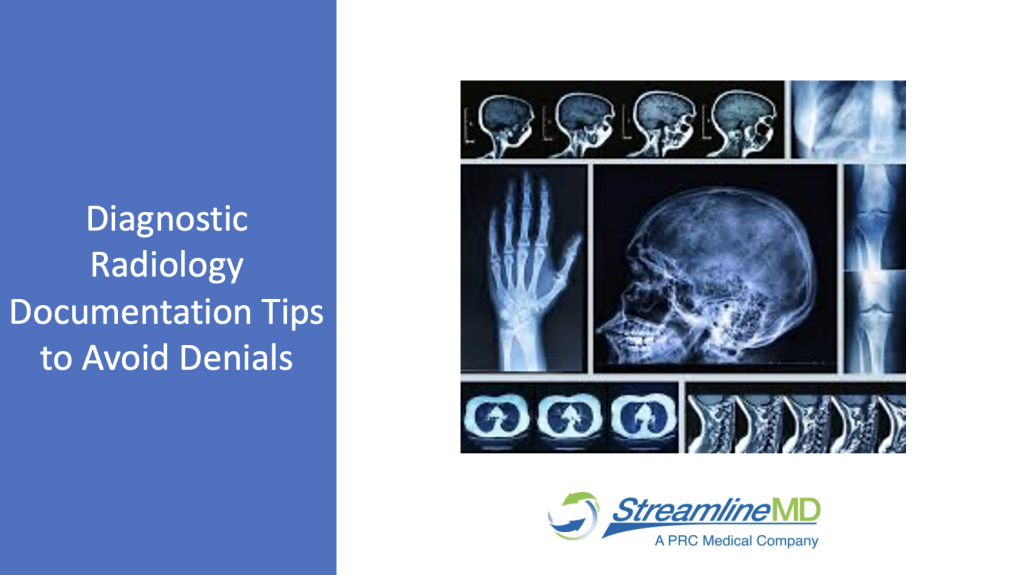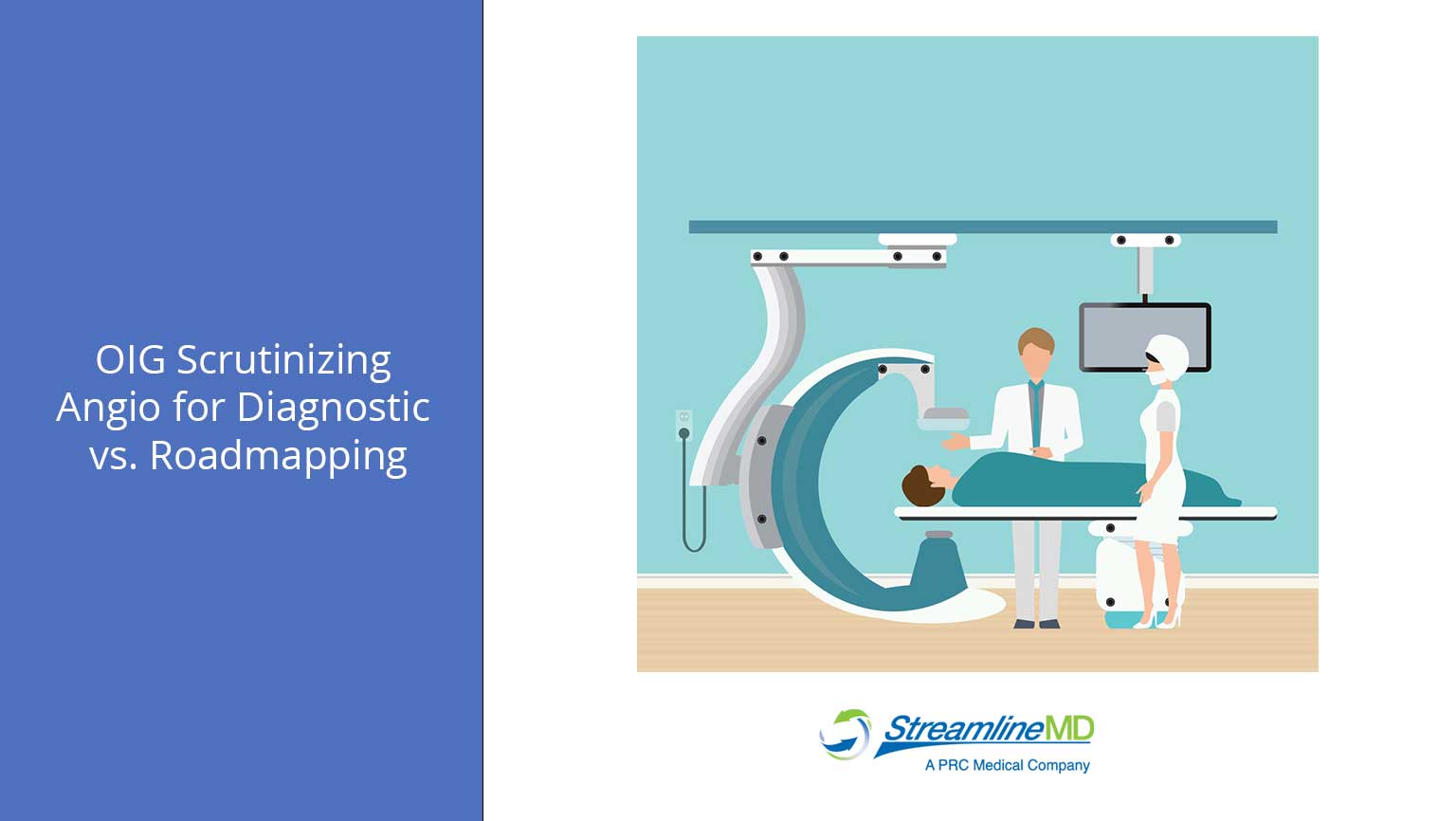This blog covers diagnostic radiology documentation tips to prevent denials and improve payments. Scroll down to see the top 3 reasons that insurance companies deny diagnostic radiology claims. This is the second in a series following last month’s blog Interventional Procedure Documentation Tips to Prevent Denials and Improve Payments.
Primary Take Aways:
- Update your report templates/macros.
- Ensure that your documentation is clear and concise, and consistent with CPT 2024 code language.
Why Insurance Carriers Deny Claims:
- Insurance carriers’ business model is to collect premiums quickly and pay out claims slowly. Insurance carriers’ revenue is generated by holding onto premiums as long as possible and investing this money to get returns that translate to revenue.
- Denying claims, especially those that are high dollar, is an easy way for insurance carriers to slow down claim payment, or to not pay claims at all. In fact, insurance carriers actively use internal algorithms and AI to automate claims denials.
How Coders and Billers Respond to Claim Denials:
- Claims are denied for various reasons. Some common reasons include lack of medical necessity, lack of prior authorization, and procedure bundling. This article’s focus is mainly on denials due to lack of medical necessity.
- Your coding and billing team must watch for claims denials, review them quickly, gather necessary supporting documentation including the provider’s documentation, and appeal these denied claims for payment.
How to Prevent Claim Denials and Improve Payments:
- Remember that your documentation is reviewed by multiple stakeholders: referring physicians, insurance carriers, coders, and billers.
- Your documentation is typically the key ingredient to preventing, and successfully appealing, denied claims.
- Your documentation must clearly state what was performed and why. It does no good to appeal denied claims with faulty or substandard documentation.
- When documentation is at its best, insurance carriers have fewer reasons to deny and stall payment.
- Documentation best practices can decrease denials and increase payment turnaround times, which is more important than ever due to latest CMS payment reductions in 2024.
Top 3 Reasons for Diagnostic Radiology Claim Denials:
1. Medical Necessity – Lack of Indications for Exams
- Unsupported diagnoses.
- Order states pneumonia, CXR is normal.
- Order states kidney stone, IVP is normal.
- Trauma, poly-trauma, MVA/MVC without specified anatomical site, possible fracture, rule-out. When these exams are negative, it is difficult to obtain reimbursement due to lack of ICD-10 diagnosis code supporting medical necessity.
- ICD10 codes without verbiage.
- Unknown when a valid diagnosis vs. what is to be ruled out, if any typos, or unable to validate, especially when exam findings are normal.
- Venous extremity Doppler: there are many different policies by CMS MACs, other carriers, and IAC requirements. MACs without policies sometimes follow other MAC’s policies without specific instruction. Consult all payer policies and be extremely specific with diagnoses.
- Ultrasound AAA screening denials; requiring secondary diagnosis of smoking or family history of AAA.
- CT Lung Cancer Screening – must state whether current or former smoker to apply appropriate ICD-10 to decrease denials. Stating tobacco use only is not a covered diagnosis.
- 3D/MIPs document whether independent or non-independent workstation and medical necessity is required. The report should state why it was performed and any findings.
Recommendation: All reports should contain a technique section. Coding from exam headers is not recommended or best practice and often leads to confusion and denials. Medical necessity is a long-standing national issue plaguing most hospital-based diagnostic radiology practices. Best managed via Interdepartmental committee meetings (Emergency, Ortho depts) and educational discussions with clinical colleagues whenever possible.
2. Documentation Insufficiencies – Mismatch of Exam Name/Order and Technique Section
- Number of views vs. number of images obtained/interpreted. Diagnostic codes are billed by number of views, not the number of images taken to obtain the necessary ordered quality images. A coned down image of a prior or a repeat of a substandard image already taken are non-billable.
- Lacks supporting documentation for exam, i.e., contrast exams do not support CPT(s) for billing. The technique section of contrast exams, i.e., CT & MRI must state what route the contrast was administered; IV, intra-articular or intrathecal. Oral contrast exams are not considered as a “with contrast” study.
- Complete vs. Limited Abdominal & Retroperitoneal Ultrasound
- All anatomical sites listed below must be addressed.
- If lack of visualization is due to surgical or acquired absence or body habitus, state this in the report and it counts as complete exam. Anything less (not mentioned) is considered a limited exam.
| Abdomen: | Retroperitoneal: |
| Liver | Kidneys |
| Gallbladder | Abdominal Aorta |
| Common Bile Duct | Common Iliac Origins |
| Pancreas | Inferior |
| Spleen | |
| Kidneys | |
| Upper Abdominal Aorta | |
| Inferior Vena Cava | |
| If any of above were non-visualized areas and why, congenial/acquired loss, body habitus = complete exam | If clinical history suggests urinary tract pathology, complete evaluation of bladder and kidneys = complete exam |
Recommendation: Review report templates/macros and make updates to ensure all required data points are included. When the number of views does not match with order/exam header verify with tech. If this is a constant issue, take to hospital radiology leadership to address.
3. Combined Imaging Exams in One Report
- Multiple plain films, different anatomical sites, same DOS, dictated in the same report without techniques or findings are problematic. If the anatomical site does not contain a clear technique section, the lowest level of CPT from the section may be assigned. Best practice is to dictate each separately.
- MRI and MRA during same session may be billed when separate sequences are obtained and techniques for each are clearly documented in the report.
- Ultrasound Duplex and Doppler
- Transabdominal and Transvaginal US exams: Clearly document the technique for abdominal and transvaginal approach, and the finding(s) for each, separately.
- Duplex and Doppler performed on the same anatomical site(s) during same session: Clearly document the techniques and findings for each.
Recommendation: Separate, distinct reports for each exam. Clearly state when different approaches for different exams are performed and when both Duplex and Doppler is performed, “Duplex ultrasound, color and spectral Doppler was performed of {XX}, inflow and outflow of {XX} showed….” Describe how blood flow is affected by imaging maneuvers.
Conclusion:
- Payers make money by denying claims which slows down and possibly reduces payments.
- Your documentation is the key ingredient to preventing, and successfully appealing, denied claims.
- The provider’s documentation must clearly state what was performed and why. Due to imaging specialty encroachment, make sure your reports are superior.
- Coders and billers are grateful when documentation is clear, specific, and concise on a consistent basis.
- Claim denials will drop and your payments will increase.
References: AMA/CPT, CMS
StreamlineMD provides Revenue Cycle Solutions to Radiology & Interventional Specialists. Our Mission is to Improve Healthcare for All Americans. Our Core Values that guide us on our mission are Service Quality, Teamwork, Accountability, Efficiency, Adaptability, Communication, and Integrity. Learn more about us at streamlineMD.com.




